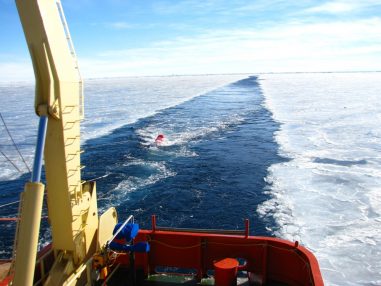World’s Largest Ice Sheet Not So Stable After All
December 3, 2018

The East Antarctic Ice Sheet locks away a lot of water — about 53 meters (174 feet) worth of potential sea level rise. The stability of the ice sheet in modern times has kept it from gaining or losing mass, even as ice sheets in Western Antarctica and Greenland shrink.
However, new research led by The University of Texas at Austin and the University of South Florida has found that the ice sheet may not be as stable as it seems. The first-ever oceanographic survey of East Antarctica’s Sabrina Coast revealed that the ice sheet has a long history of expanding and shrinking, a finding that indicates the ice sheet may contribute substantially to global sea level rise as Earth’s climate warms.
The results were published in the Dec. 14, 2017, edition of Nature and the study was featured on the cover.
Co-lead author Sean Gulick, a research professor at the University of Texas Institute for Geophysics and the UT Department of Geological Sciences, said the survey found that glaciers from the Aurora Basin have been stable only for the past few million years.
“We have evidence for a very dynamic ice sheet that grew and shrank significantly between glacial and interglacial periods,” he said. “There
were also often long intervals of open water along the Sabrina Coast, with limited glacial influence.”
Using marine seismic technology deployed from an icebreaker and core samples, researchers were able to reconstruct how glaciers on the Sabrina Coast have advanced and retreated during the past 50 million years. The Sabrina Coast, and nearby Aurora Basin, are particularly important because regional glaciers are presently thinning and retreating as nearby ocean waters warm.
“This process may just be the beginning,” said co-lead author Amelia Shevenell, an associate professor at the
University of South Florida. “Once you have that combination of ocean heat and atmospheric heat — which are related — that’s when the ice sheet could really experience dramatic ice-mass loss.”
The National Science Foundation manages the United States Antarctic Program and provided the funding and logistical support that made field research possible.
Back to the Newsletter